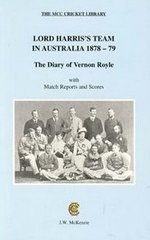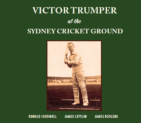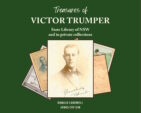The Diary of Vernon Royle
Archie Mac |Published: 2001
Pages: 80
Author: Royle, Vernon
Publisher: J W McKenzie
Rating: 2 stars

It took until 1898, after Test – which was still being spelt in the press with a lower case ‘t’ – cricket had survived on an ad hoc basis for 20 years, before someone finally decided to make a list of what constituted a Test match.
The man who accepted the challenge was a South Australian cricket writer Clarence Moody, who wrote what became the accepted Test match list in the 1890s. Some of the matches which made the list would raise an eyebrow and a couple would elicit vigorous head shaking.
The one off Test match played in Australia in 1879-79, which features in The Diary of Vernon Royle, is undoubtedly in the head shaking category. The English team which was comprised almost entirely of amateurs, with just a couple professionals to take care of the menial labour known as bowling, was barely of an English county standard let alone deserving of Test status.
In truth only perhaps four or five of the tourists would be considered of suitable class to make a representative Test team of the period and that would include the two professionals; George Ulyett and Tom Emmett. Our diarist was probably just below Test class although his ambidextrous cover fielding was always considered top shelf.
The diary itself is fairly bland and contains the bare minimum of either controversy or cricket. Most diary entries are short and you hardly notice, after reading the appropriate entries, that Mr Royle is referring to a Test match. This may have more to do with the thumping ten wicket victory to the Australian team, which saw Fred Spofforth become the first player to claim a hat-trick in a Test match.
There are included annotations, however these are brief in nature and do not add materially to the book. This is an opportunity missed, as the tour itself was controversial and contained a pitch invasion which saw the English captain Lord Harris and another player assaulted. Again Royle is brief in describing the riot although he does condemn the actions of the ‘larrikins’ as disgraceful.
There should be no criticism of Royle however. After all, the diary was a personal reminiscence that was not written for a wider audience, let alone a 21st century one. I did wonder therefore whether he would be chuffed or, alternatively, horrified by its publication over 100 years later.






Leave a comment